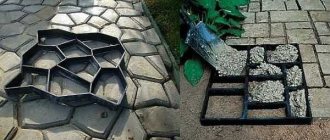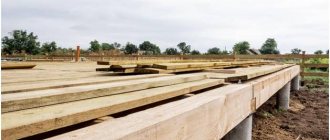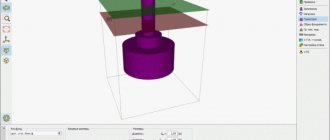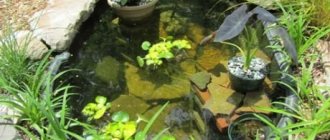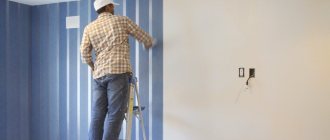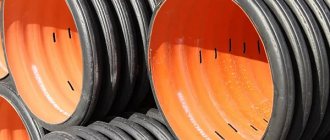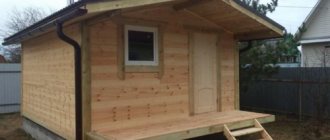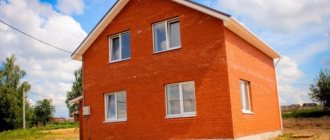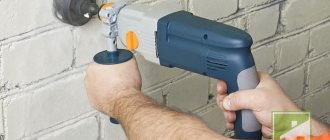- March 20, 2020
- Construction
- Yana Mylnikova
Concrete is a man-made building material. To obtain it, water should be added to the cement-sand mixture, as well as other ingredients. In order for the concrete to be of high quality, strict proportions must be observed when preparing the solution. Otherwise it will not harden to design or be durable.
Types of concrete
Very often, many people ask what brand of concrete is needed for the foundation. The answer to this question depends on what kind of building is being built (single-story, multi-story). The following types of concrete are used for external construction:
- Silicate. It is obtained from lime and silicon. In some cases, quartz is added to it. Sand is used as fillers.
- Perlite concrete. Perlite is used for its production. Very often this material is used to create fences.
- Reinforced concrete. It can be obtained by combining concrete with metal reinforcement. The material is used in any climate zone. It will not lose its properties even in regions where the air temperature reaches +60 degrees Celsius, as well as in areas where it can be up to 45 degrees below zero.
- Tufobeton. Its main filler is volcanic tuff. This material can be used to build walls and also make floor slabs.
To decide on a specific type, it is necessary to take into account the operating conditions of the structure being built.
To correctly determine what kind of concrete to fill the foundation with, you need to understand what it consists of. The material under consideration includes the following main components:
- Fillers. These include: pebbles, crushed stone and sand.
- Knitting elements. It can be cement or lime.
- Water.
With a certain combination of these components, it will be possible to create a wide range of different solution options. To give concrete certain properties, additives are additionally used. This allows you to significantly expand the scope of its application.
How to cook with your own hands and in a concrete mixer
If you plan to build a small building that will require a minimal amount of concrete, it is better to prepare it yourself. To do this, you need a small container (bathtub or basin) and a shovel. Take 1 share of cement (500 m), 2.5 shares of gravel and sand. All ingredients are mixed. Make a well in the center of the mixture and pour some water into it. The mixture is gradually stirred and water is added as needed. The consistency of the finished solution should be fluid, not liquid.
For the mechanized method of preparing the solution, a concrete mixer is used. To prepare 1m³ of solution you will need to take 300 kg of cement (M 500), 650 kg of sand, 1150 kg of crushed stone and approximately 160-185 liters of water.
First, sand is poured into a concrete mixer, and then cement is gradually added. The machine turns on, after mixing the entire amount of cement and sand, little by little water is added to the concrete mixer. After the mixture has the consistency of thick sour cream, crushed stone is added to the machine (in portions). Thus, pour all the components into the machine and mix thoroughly.
The solution should be rotated in the machine for 2-3 minutes until it is completely ready.
Strip foundation
It is a closed loop made of reinforced concrete beams. It is erected under each load-bearing wall of the structure. On this basis, you can build absolutely any structure - from a one-story wooden house to a high-rise monolith. Strip foundation is the most commonly used foundation for the construction of cottages and summer houses.
There are two main types of it:
- Monolithic.
- Made. It is formed from blocks, panels or both.
In the prefabricated version, the blocks are fastened together using cement or reinforcement.
Most often, a monolithic foundation is constructed. At the same time, reinforcement cages are knitted. The structure is then filled with concrete mixture. Thanks to this, the monolithic base is inseparable.
Made
The technology for constructing a prefabricated foundation is similar to a strip foundation. During its construction, special blocks (FBS) are used, which are delivered ready-made directly from the factory or construction base. They significantly speed up construction processes, but require the use of lifting equipment and the organization of access roads to the construction site.
The blocks are laid using concrete mixture. For installation, you can use lightweight concrete that has an average density of 500 to 1800 kg/m³. It is enough to buy the M100 brand and apply it to the slabs in several layers.
Concrete grades
This indicator is a guarantee of the strength of the future structure. What brand of concrete is needed for the foundation? The answer to this question depends on the type of structure that is being built (bridge, high-rise, one-story warehouse, etc.). Before purchasing concrete, you must pay attention to its brand. It is designated by the letter "M". The number that is indicated along with it (from 50 to 1000) shows how much weight one square centimeter of concrete of this particular brand can withstand. In another way, we can say that this is an indicator indicating the compressive strength.
Very often people ask, how big are the differences in the brands of concrete used for the foundation? This indicator must be selected based on the design of the future building. There is a certain correspondence between the strength class and grade of concrete. In GOST 26633-91 it is displayed in the following table:
| Concrete strength class | Brand |
| B3.5 | M50 |
| AT 5 | M75 |
| B7.5 | M100 |
| AT 10 | M150 |
| B12.5 | M150 |
| B15 | M200 |
| IN 20 | M250 |
| B22.5 | M300 |
| B25 | M350 |
| B27.5 | M350 |
| B30 | M400 |
| B35 | M450 |
| B40 | M550 |
| B45 | M600 |
| B50 | M700 |
| B55 | M750 |
| B60 | M800 |
| B65 | M900 |
| B70 | M900 |
| B75 | M1000 |
| B80 | M1000 |
GOST also states that there is another indicator of this material - its workability. Concrete mixtures are hard, super-hard and flexible. All this must be taken into account to decide what grade of concrete is needed for the foundation. Let's briefly describe the most popular ones.
Symbol
A short designation is required when placing an order for concrete of a given quality. If concrete of a given composition is ordered, markings are not used.
The designation indicates the following data:
- Type of concrete (abbreviated)
- Strength class
- Workability grade based on cone draft
- Optional indicators - medium density grade, frost resistance, water resistance, other characteristics
Heavy concrete, strength class B20, workability grade according to cone draft P3, frost resistance 150 cycles, normal water permeability, waterproof at pressures up to 0.4 MPa
M200
This brand of concrete is quite suitable for the foundation of a one-story house. In this case, a prerequisite is the absence of a groundwater level located too close to the surface.
Various floor slabs and piles are made from this material. In addition, it is used to fill the foundation in frame-panel houses.
M350
This brand of concrete is ideal for strip foundations. This type of building material is the most commonly used. Its main advantage is frost resistance, as well as durability. Concrete of this grade is used for the construction of the foundations of various multi-story structures. In addition, it can be used to create ceilings, consoles, and other complex structures. If construction is carried out on clay soils, as well as in areas where groundwater comes close to the surface, it is recommended to use concrete of this particular grade.
Useful tips
When planning a concrete “ribbon” for a house, in addition to raw materials and equipment, you should think about:
- reinforcement. Regardless of the brand, strengthening concrete will increase reliability and reduce the risk of cracks due to soil heaving. A corrugated rod with a diameter of 12 mm or more is suitable for reinforcing the foundation;
- moisturizing concrete. During the period of accelerated strength gain (the first 7–14 days), it is necessary to water the surface and base with water several times a day - there is no need to be afraid of puddles. You can start watering no earlier than 8 hours after installation;
- protection from drying out. In hot weather, sawdust is poured in a thick layer on freshly laid concrete, and burlap is laid on top.
What concrete to choose for the foundation. We're going to the concrete plant.
Obviously, the question is not so much what brand of concrete to choose for a strip foundation, but to ensure that the laid mixture meets the brand characteristics. The developer will need attention - both when preparing concrete on his own and when purchasing a ready-made mixture.
M400
This building material is much stronger than those described above. This brand of concrete is ideal for strip foundations. It is used in the construction of high-rise buildings.
Such concrete is produced from cement and specially selected fillers. It is also used for the construction of one-story houses. If you use M400 concrete in the construction of high-rise buildings, then their number of storeys should not exceed 20.
Which one is needed for private construction?
The brand is selected taking into account:
- soil quality,
- wall materials for the future home,
- its architectural features,
- number of storeys,
- purpose of the building (temporary building, summer cottage, year-round country house).
The heavier the building and the weaker the soil, the stronger the concrete should be. For areas with high underground flows, concrete with a high moisture resistance is needed.
Provided that the construction will be carried out on dense soil, you can select the material simply by number of floors and material in accordance with this table:
| Wall material | Concrete for a one-story building | Concrete for a two-story building |
| Brick or stone | IN 20 | B22.5 |
| Tree | B15 | B17.5 |
| Porous concrete | B17.5 | IN 20 |
Material selection criteria
We continue to consider what grade of concrete is needed for the foundation. Very often, due to lack of finance, low grade material is chosen. It is affordable, but it contains a small amount of cement. Therefore, the strength of such concrete is low. Professionals recommend not saving on this material, because the strength of the entire structure depends on it.
For the foundation it is recommended to use concrete grades M400 and M350. This is due to the fact that this material is highly dense. Therefore, the base always remains dry.
If you decide to save on concrete, it is recommended to purchase additional waterproofing for the foundation. This will protect the base from high humidity that occurs during rainy periods or floods.
But this rule does not apply to multi-story buildings. Concrete grade M200 and lower cannot be used in the construction of high-rise buildings (even two-story buildings).
Before choosing a material, it is imperative to familiarize yourself with the properties that it should have. These include the following:
- fire resistance;
- hygroscopicity;
- density;
- fluidity;
- frost resistance.
Making your own solution is not too difficult. But at the same time, you need to understand that if you have no experience in this work, it is better to entrust it to professionals.
Example: MZLF 11*14 m
When building a foundation, future homeowners use different materials and offer their own solutions. Let's look at a few examples of tapes made by members of our portal. The work of our user with the nickname Alexey_$ received good reviews.
Alexey_$ FORUMHOUSE user
The height was 90 cm, they were buried 60 cm, of which in the end there was 30 cm of sand cushion and 30 cm of tape underground. The width varies and is indicated in the foundation design.
The trench was dug with a tractor according to markings made with white spray paint directly on the grass. While digging, Alexey “shot the level so as not to over-dig or under-dig.”
Small errors were eliminated with a shovel. High-density waterproofing material was laid in the trench.
The foundation design provided for a 30 cm sand cushion; pouring and compaction with a vibrating plate was done every 10 cm.
Alexey_$FORUMHOUSE Member
After all the manipulations, the error in level was within a centimeter over the entire area.
Ruberoid was laid out on the pillow in two layers
and set up the formwork: longitudinal boards 150x40 mm, every 60 cm - 100*50 mm. The inside of the formwork was lined with polyethylene and reinforced with 8-diameter studs.
12 mm reinforcement was knitted in 2-4 rows depending on the thickness of the tape (400 - 650 mm). The protective layer on the bottom was 5 cm, on the other sides 3-4 cm. Every 40 cm there were vertical jumpers with 8 mm reinforcement.
Alexey_$FORUMHOUSE Member
Spliced at least 50 cm, mating, where necessary, was carried out in a run.
Pouring concrete:
The foundation was covered with polyethylene. A little more than a week passed, the inside of the formwork was dismantled and waterproofing was done.
Backfilling: 10 cm of sand along the tape, the rest is sulinka - 5 cm below the level of the upper edge of the tape.
To reduce heat loss into the ground, the voids were insulated with EPS. This is part of the complex insulation of the sub-foundation space: voids + tape outside + blind area.
Alexey_$FORUMHOUSE Member
The house will have to spend the winter without heating for a couple of years and the influence of frost heaving forces will be reduced.
Features of the composition
Concrete is not just a mixture of cement and water. It must contain the necessary fillers. In addition to water and cement, gravel, crushed stone and small broken red bricks should be added to concrete. The proportions of the components depend on the brand of concrete, as well as on the purpose of the solution itself. The cohesion coefficient will be higher if there are more uneven components in the aggregate. River sand is not suitable for manufacturing. Therefore there is no need to use it.
It is recommended to use only medium-grained sand. River, as a rule, fine-grained. In addition, it contains a huge amount of clay particles. This significantly reduces the strength of the foundation.
When choosing crushed stone or other filler, you should give preference to materials whose fraction is from 6 to 20. If you plan to pour a foundation, then this figure should be from 25 to 40.
Lightweight concrete contains a small amount of crushed granite or gravel. This material is not suitable for foundation foundations. As for masonry mortar, it is made without any fillers.
Very often people ask how much concrete is required for a foundation. What are the standard proportions of its composition? The answer to the first question depends on the base area of the object being built. For grade M400 crushed stone, sand and cement are required in a ratio of 4.8:3.8:1. For M200 concrete, the proportions are shown in the photo.
To prepare a high-quality concrete solution, the following materials are needed:
- Sand.
- Cement.
- Water.
- Aggregate.
- Softener.
Additives can also be used to increase frost resistance or shorten the hardening period.
Main components of homemade concrete mixture
If the mixture will be produced directly on the construction site on your own, you must adhere to the concrete manufacturing technology so that it obtains the necessary characteristics.
Cement
There are several types of cement suitable for making concrete for foundations:
- quick-hardening Portland cement;
- pozzolanic cement;
- Portland slag cement;
- Portland cement.
The most commonly used option is Portland cement. It is quite economical and has satisfactory properties. Other options are used for special requirements. Portland cement is purchased grade M400 or M500.
Sand
The sand must be homogeneous, without impurities and debris . It is better to use river sand - it is cleaner. An important parameter of sand is grain size.
When using M300 cement, you need to purchase fine sand with a particle size of about 2.5 mm. For a mixture based on stronger cement, coarser sand is needed - with a grain size of 3.5 mm or more.
Gravel or crushed stone
The base filler can be gravel or crushed stone . It is better to use gravel, as it has an optimal strength-to-price ratio. The size of the filler fractions depends on the dimensions of the foundation.
Large foundation strips are filled with concrete with a filler fraction of 10-20 mm. When arranging a shallow foundation, the gravel should be finer.
Water
Much depends on the quality of the water. It must meet the requirements of GOST. It should contain less than 5000 mg of salts per liter, no more than 2700 mg of sulfates, low acidity is needed.
You can use technical or drinking water . With an optimal salt composition, sea water is suitable. Sewage and swamp water cannot be used to create a foundation.
Required Tools
To prepare a concrete solution, the following tools may be required:
- Concrete mixer. An electric one is best, but if you don’t have one, you can use a regular manual one.
- Container for mixing the solution. A regular trough will do. If a concrete mixer is used, the solution is mixed in it.
- Buckets. They will be needed to deliver water and any other components.
- Shovel It is needed to mix the solution.
- Large sieve. It is necessary in order to filter out any clogs or debris caught in the sand.
Very often people ask how much concrete is required for a foundation. What are the standard proportions of its composition? The answer to the first question depends on the base area of the object being built. On average, about 330 kg of cement is used per 1 m3 of solution. To prepare high-quality concrete, crushed stone, sand and cement are required in a ratio of 5:3:1.
Self-cooking
During the preparation process, it is necessary to mix the components in the correct proportions, taking into account the brand of cement used:
| Cement brand | Cement | Sand | Gravel | Water |
| M100 | 1 | 4,1 | 6,1 | 1,1 |
| M200 | 1 | 2,5 | 4,2 | 0,9 |
| M300 | 1 | 1,7 | 3,2 | 0,65 |
| M400 | 1 | 1,1 | 2,4 | 0,5 |
| M500 | 1 | 0,8 | 1,5 | 0,4 |
Mixing in a concrete mixer
If you need to mix more than 50 liters of concrete at once, you need to use a concrete mixer.
First, use a measuring bucket to pour dry components into a concrete mixer , maintaining the correct order - cement, sand, crushed stone.
All this is mixed dry for several minutes. Next, water is poured in and everything is mixed together for 12-16 minutes. The finished concrete mixture is moved into special containers and supplied to the pouring site.
Required Fillers
As noted above, to prepare the solution, it is necessary to use sand of a certain fraction. In some cases, coarse crushed stone and gravel are added to the solution. If plastering and masonry work is planned, only fine sand should be used.
Currently, manufacturers offer this material of river or ravine origin. It contains a large amount of clay particles, as well as other impurities. Therefore, it is not recommended to buy such sand for building a foundation.
As for peat, glass, soil and many other similar substances, they should never be used.
Various additives
To obtain a high-quality solution, additionally add:
- Thinning additives. They help make the mixture frost-resistant and also minimize the amount of water used.
- Plasticizer. This additive improves fluidity. It makes it possible to create a shape of any configuration from concrete. In addition, the plasticizer has a positive effect on the laying properties.
- Hardening accelerator. Thanks to it, the mixture hardens faster.
- Aerating. They are used to reduce the amount of water, as well as to increase frost resistance and thermal insulation properties.
- Waterproofing, sealing and water-repellent agents that reduce the permeability of concrete.
These additives can be purchased at any hardware store. At the same time, you need to understand that you should not overdo it with them. They should be about 2% of the total mass.
However, there are substances that you can not buy, but make yourself at home. Some professionals use soap solution as additives. When using such drugs, it is recommended to adhere to a certain dosage. If the proportion is incorrect, the solution will be of poor quality.
Mobility of concrete
This indicator is denoted by the letter “P”. It talks about the degree of fluidity of concrete. The ease of working with the composition directly depends on this indicator. As for the numerical coefficient, the range varies from 1 to 5. The higher this indicator, the more liquid the composition.
In private construction, when laying out the foundation, it is necessary to use concrete with a mobility of 2 to 3. The most fluid compositions are used only in cases where it is necessary to pour a densely reinforced base. It is very convenient to work with such a solution. An important rule is that it is forbidden to add water to ready-made concrete to increase its mobility. In this case, the grade of the solution will decrease, and the final strength will decrease.
Scope of application of various grades of concrete
It's no secret that strip foundations are used in absolutely any construction technology. However, each brand of concrete has its own purpose:
- M150 for concreting terraces. This brand of concrete for the foundation of a fence is also used quite often.
- M200 is used for the construction of bases in low-rise construction, terrace walls, external and internal stairs. Concrete M200 is also used for the foundation of blind areas of buildings.
- M300 is suitable for the construction of foundations for attic and two-story cottages, as well as floors, monolithic partitions, walls and stairs. This brand of concrete is ideal for a garage foundation.
- M350 is used under difficult operating conditions of the facility being built.
- M400 is ideal for the construction of coastal foundations, as well as when performing work in earthquake-prone regions.
- M450 and M500 are used in the construction of various tunnels, sewer systems, and bridges.
Assembly base plan
The plan for arranging a prefabricated foundation shows a cross-section of the building being constructed in a horizontal plane on a scale of 1:200 or 1:400.
The document outlines in detail the structure of the base relative to the axes of the building. The plan provides specific information:
- depth of placement of prefabricated elements;
- size, configuration and layout of blocks and pillows;
- cross-sections of the base in several places on a scale of 1:25 or 1:50;
- location of communication lines.
An explanatory note is attached to the plan, which indicates the technological stages of the process of arranging the foundation, the characteristics of individual elements, the structure of the foundation and other important information.
Return to contents
